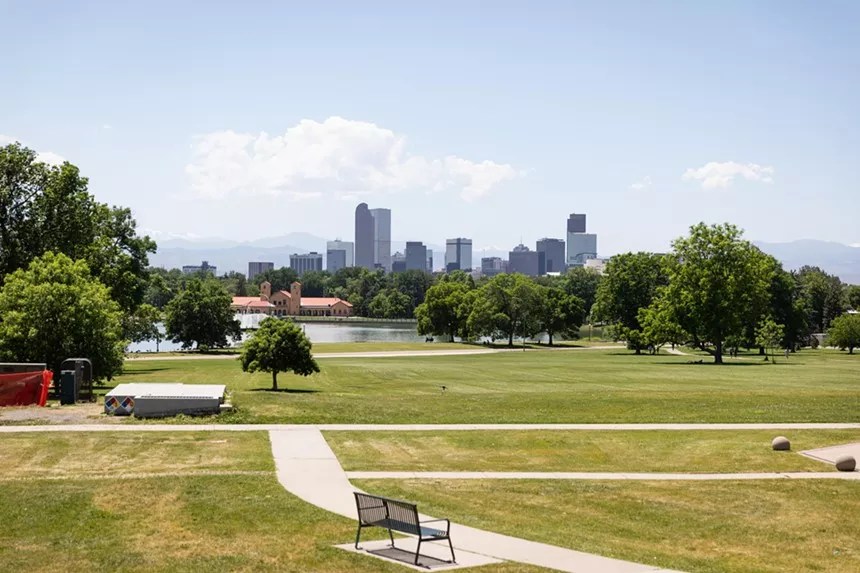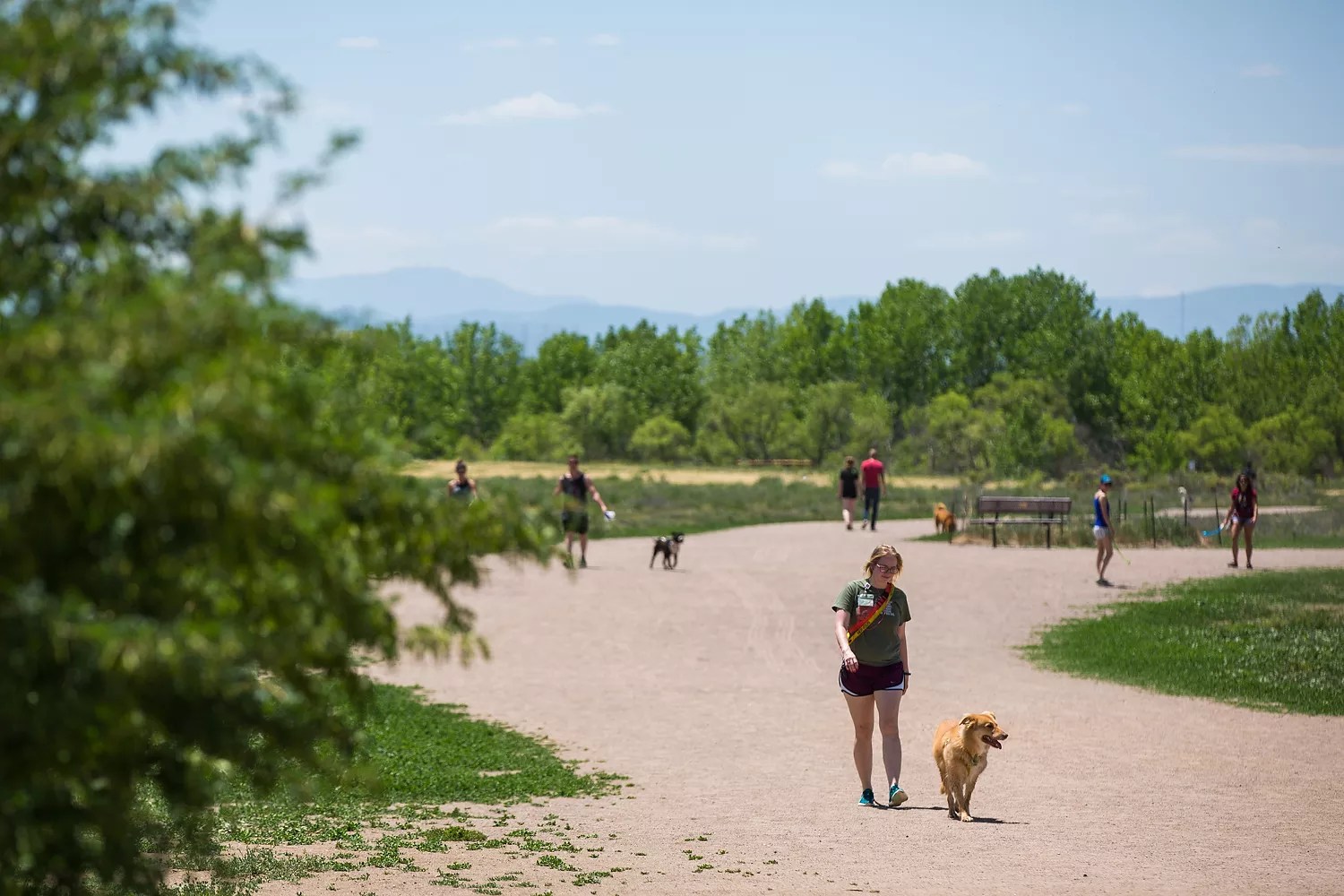
Jack Spiegel

Audio By Carbonatix
Denver has one of the best park systems among the biggest cities in the United States, according to the Trust for Public Land (TPL), a nonprofit that published its annual ParkScore index on Wednesday, May 21.
Among the country’s 100 most populated cities, Denver has the tenth best park system in 2025, up three spots from the TPL rankings last year.
Denver had more than 500 parks scored in its ParkScore ranking, highlighted by large neighborhood parks like Washington, City and Sloan’s Lake parks. Some parks have deep roots in Denver communities, as well, such as La Alma, Mestizo and La Raza parks, which were all important for Chicano social movements in their areas.
The City of Denver is also poised to reopen the Park Hill Golf Course as a public open space and park this summer, which should boost the city’s score in the future, according to Jim Petterson, the Vice President of the TPL Mountain West Region. But the city has plenty of smaller projects to be proud of across town, such as new pocket parks, multi-use trails and an upcoming $56 million recreation center coming in 2027. (The TPL gives money to parks and trails in Denver and across the state; the organization is helping develop the Via Verde trail set to open in Westwood this fall.)
“We’re seeing investments of all kinds from little pocket parks in Westwood to wholesale park renovations and future parks,” Petterson says. “All of that is adding up to being among the best in the countries.”
The ParkScore index only considers park space in each city’s jurisdiction, so Denver doesn’t benefit for maintaining Red Rocks Park and Amphitheatre in Morrison, even though it’s owned by the city. The scores are based on a park system’s size, funding, amenities, residential proximity and equitable distribution throughout the city.
The Mile High City jumped from thirteenth in the rankings in 2024, and now sits ahead of major cities like Chicago, Boston and New York City, which ranked eleventh, twelfth and thirteenth, respectively. Petterson says a big reason for Denver’s success in the 2020s is a Parks and Open Space a quarter-cent sales tax approved by local voters in 2018, which created a $46 million annual budget for Denver parks.
“Today we’re really seeing the benefits of that in the city,” Petterson says. “Thanks to the 2018 ballot measure as well as some of the Denver bond measures, the city has opened several new parks, and it improved amenities in existing parks. And it’s really just stepping it up as you would expect from a city that has one of the ten best park systems.”
The City of Denver promised in 2018 that the Parks and Open Space ballot measure would make sure every resident in the city is a ten-minute walk from a park. The ParkScore index found that 97 percent of Denver residents live a ten-minute walk from a park, according to Petterson.
Over the last three years, an average of $170 million a year has gone into Denver’s parks from city, federal and nonprofit sources. The index estimates that’s about $229 spent for each of the more than 700,000 residents in the city, compared to a national average of $133 per resident.
The top city on the ParkScore index, Washington D.C., “gets a leg up” from federal funding for the National Mall, Petterson says. Irvine, California, came in second, and Minneapolis came in third. Petterson says that seven of the top ten park systems have dedicated funding sources for their parks.
“That’s really a key differentiator,” he says.”Colorado Springs also has a dedicated funding source. It’s just much smaller than Denver’s, which is why their investments aren’t keeping pace with the growth and demands of the city.”
Colorado Springs was just outside the top fifty, but one other Colorado city made the cut.

Cherry Creek State Park’s dog off-leash area.
Danielle Lirette
Colorado Springs, Aurora Falling in Park Rankings
Aurora came in 48th in this year’s park system rankings, while Colorado Springs came 52nd. Aurora benefits from being home to the Cherry Creek State Park as well as Aurora, Quincy and Cherry Creek reservoirs and neighborhood parks like Utah and Del Mar parks.
“Aurora and Colorado Springs are kind of holding steady,” Petterson says. “They’re kind of holding steady doing what they’re doing while other cities like Denver are making big investments. It’s not that they doing anything different or wrong. It’s just other cities are stepping it up in ways those cities aren’t.”
More than 238 parks in Aurora were scored for the index, with about 89 percent of Aurora residents living within a ten-minute walk from a park. Over the last three years, about $62 million a year has been invested into Aurora’s parks, or about $156 per resident, according to the TPL.
The ParkScore index from four years ago found that Denver and Aurora’s parks had racial inequities. Denver ranked eighteenth in that year’s ParkScore index, but Aurora had ranked much higher, at the 25 spot. Aurora ranked 48th last year too, and the city still has inequitable park access, according to the index.
“In Aurora, residents living in neighborhoods of color have access to 55 percent less nearby park space than those living in white neighborhoods,” Aurora’s index report reads. “Residents living in lower-income neighborhoods have access to 52 percent less nearby park space than those in higher-income neighborhoods.”
The ParkScore index started in 2012 as a way to “make sure fellow cities know what other cities are doing, so they have a little creative competition to make sure their cities are the most livable, the most appealing to residents, businesses and others,” Petterson says.